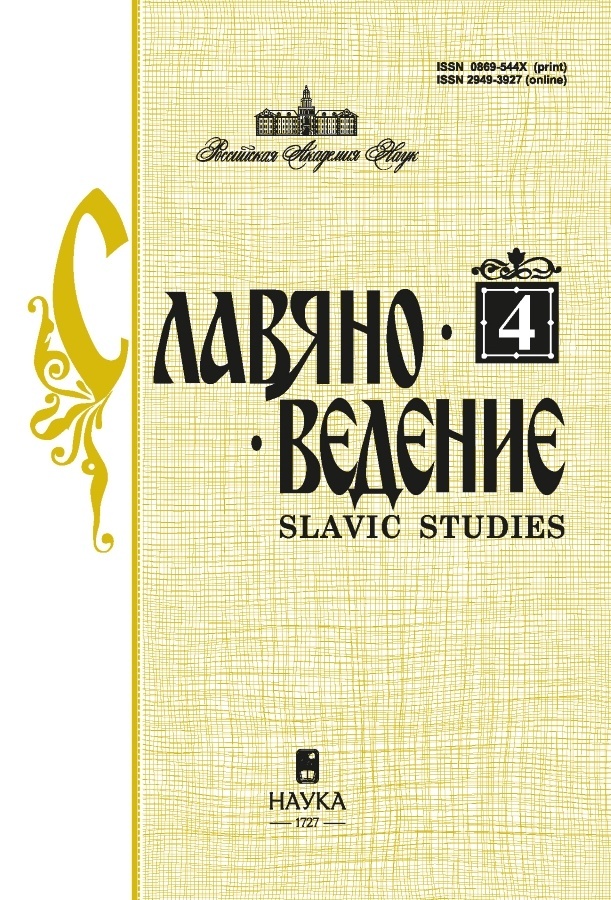The Motif of (Not)Home in Bosnian Refugee Literature
- Autores: Shatko E.V.1
-
Afiliações:
- Institute of Slavic Studies of Russian Academy of Sciences
- Edição: Nº 4 (2025)
- Páginas: 101-108
- Seção: * * *
- URL: https://modernonco.orscience.ru/0869-544X/article/view/696155
- DOI: https://doi.org/10.31857/S0869544X25040085
- EDN: https://elibrary.ru/VABWLW
- ID: 696155
Citar
Texto integral
Resumo
The article explores the motif of home in contemporary Bosnian refugee literature. The study focuses on the short story collections «Sarajevo, Exodus of a City» by Dž. Karahasan, «Sarajevo Marlboro» by M. Jergović, and the novels «Tri samoće ili mjesto nedovršenih stvari» by V. Kapor and «Catch the Rabbit» by L. Bastašić. For Karahasan and Jergović, home becomes a space of destruction, both literally and metaphorically. For Kapor, it is a space of memory, that symbolizes something lost but necessary for the wholeness of the self. In contrast, in Bastašić's novel, the lost home is not idealized at all; it is sharply contrasted with a civilized home. In besieged literature, home loses its protective function, as it is understood as a specific building or as a city under siege, thus becoming a source of danger itself. The home ceases to be a site of action or refuge; it is transposed into the realm of memory, becoming ghostly, illusory, and unattainable. Most characters in refugee literature (unsuccessfully) strive to (re)create a home or retrieve what has been lost. The trauma from losing a home often proves to be insurmountable (with the exception of the novel «Tri samoće»).
Palavras-chave
Sobre autores
E. Shatko
Institute of Slavic Studies of Russian Academy of Sciences
Autor responsável pela correspondência
Email: eshatko@gmail.com
ORCID ID: 0000-0001-9467-8987
Moscow, Russian Federation
Bibliografia
- Басташич Л. Поймать зайца. М.: Эксмо. 2021. URL: https://www.litres.ru/book/lana-bastasic/poymat-zayca-65714182/chitat-onlayn/ (дата обращения: 01.03.2025).
- Капор В. Три одиночества, или Место незавершенных дел. СПб.: Издательско-Торговый Дом "Скифия", 2017. 144 с.
- Karahasan Dž. Dnevnik selidbe. Sarajevo: Connectum, 2010. 102 s.
- Jergović M. Sarajevski Marlboro. Podgorica: Nova knjiga, 2016. 144 s.
- Иглтон Т. Идея культуры. М.: Издательский дом Высшей школы экономики, 2012. 192 с.
- Лакофф Дж., Джонсон М. Метафоры, которыми мы живем. М.: Едиториал УРСС, 2004. 256 с.
- Лотман Ю.М. Семиосфера. СПб.: Искусство - СПБ, 2000. 704 с.
- Маслова В.А. Когнитивная лингвистика. Минск: ТетраСистемс, 2004. 256 с.
- Топорков А.Л. Дом // Славянская мифология: Энциклопедический словарь. М.: Эллис Лак, 1995. 416 с.
- Топорова Т.В. Семантическая структура древнегерманской модели мира. М.: Радикс, 1994. 192 с.
- Шатько Е.В. Топос Сараева в "осажденной" литературе: Дж. Карахасан, М. Ергович, К. Заимович // Топос города в синхронии и диахронии: литературная парадигма Центральной и Юго-Восточной Европы. Коллективная монография / отв. ред. Н.Н. Старикова. (Серия "Литература ХХ века"). М.: Институт славяноведения РАН, 2023. С. 198-228.
Arquivos suplementares










